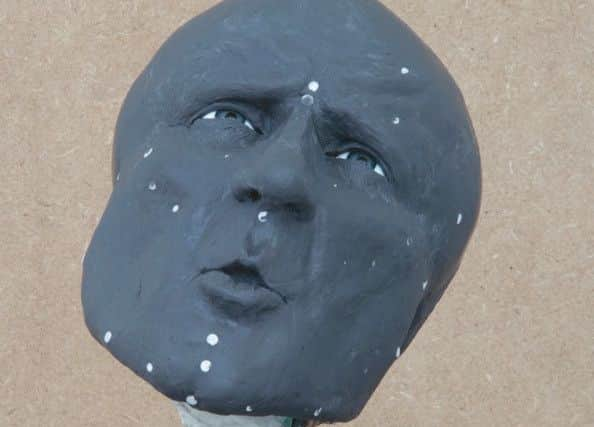Forensic experts recreate face of infamous city rabble rouser


The diminutive, known as “Bowed Joseph”, was a feared rabble-rouser who could whip up the mob with a few literal beats of his drum until he fell to his death from a stagecoach during a drunken return from Leith races in 1780.
Now a Master’s student at the University of Dundee has produced a life-size model from the legendary figure’s skeleton.
Advertisement
Hide AdAdvertisement
Hide AdSmith’s face was once known by thousands before being lost to history. It can now be seen for the first time in centuries, after being reconstructed manually onto a 3D print of Smith’s skull.


Upon his death, Smith’s bones were preserved in the Anatomical Museum at the University of Edinburgh, to honour his stature and great service to the city.
The City Council often relied upon him to sort out citizens’ grievances and control “The Beast”, Edinburgh’s notoriously unruly mob.
Lynn Morrison, who studies Forensic Art, was able to scan his remains and use 3D modelling software to decide upon a realistic pose that best represents the Edinburgh cobbler. The resulting model is currently on display at University of Dundee’s degree show.
Advertisement
Hide AdAdvertisement
Hide AdShe describes becoming “totally hooked” on the “feisty character” while conducting her research, looking mostly to Robert Chambers’ writings. Even 50 years after Smith’s untimely death, the famous Scottish polymath still held him in high regard.


Morrison decided to depict Smith as described by Chambers, “marching with his drum and shouting”. She also sourced clothes and a tabor-drum suitable for the period, as the larger military drums were too large for the “tiny” figure.
Morrison said: “I hope that it will bring him back to life and make people aware of him.”
It is likely that Morrison’s model will soon reside in the Anatomy Museum alongside Smith’s skeleton.
Advertisement
Hide AdAdvertisement
Hide AdCurator, Malcolm MacCallum said: “We are delighted with Lynn’s reconstruction of Bowed Joseph. Lynn spent time with us examining, measuring and scanning the skeleton before applying her reconstruction techniques. The outcome is a ‘human’ and contemporary appreciation of an 18th century character.”
It appears that the project may have had unforeseen benefits. After working closely on his skull and spotting that “his teeth were all missing and the bone had reabsorbed”, Morrison believes that Smith’s rickets may have been caused by a lack of calcium.
Bringing people back to life is a role-reversal for Morrison. She’s worked behind the scenes in television for 28 years, doing post-production for murder shows like Taggart and Rebus.
Originally from Dundee, Morrison studied Sculpture and Video at the same university 30 years ago, however claims to have found her true calling.
Advertisement
Hide AdAdvertisement
Hide AdShe said: “This is me now doing what actually I always wanted when I was a sculpture student. But there were no courses, I didn’t know what it was called or how to go about it and it was in the days before internet, so it’s taken me until now to do it.”
She added: “I did really feel that I got to know him through the project. I really wanted to do him justice.”